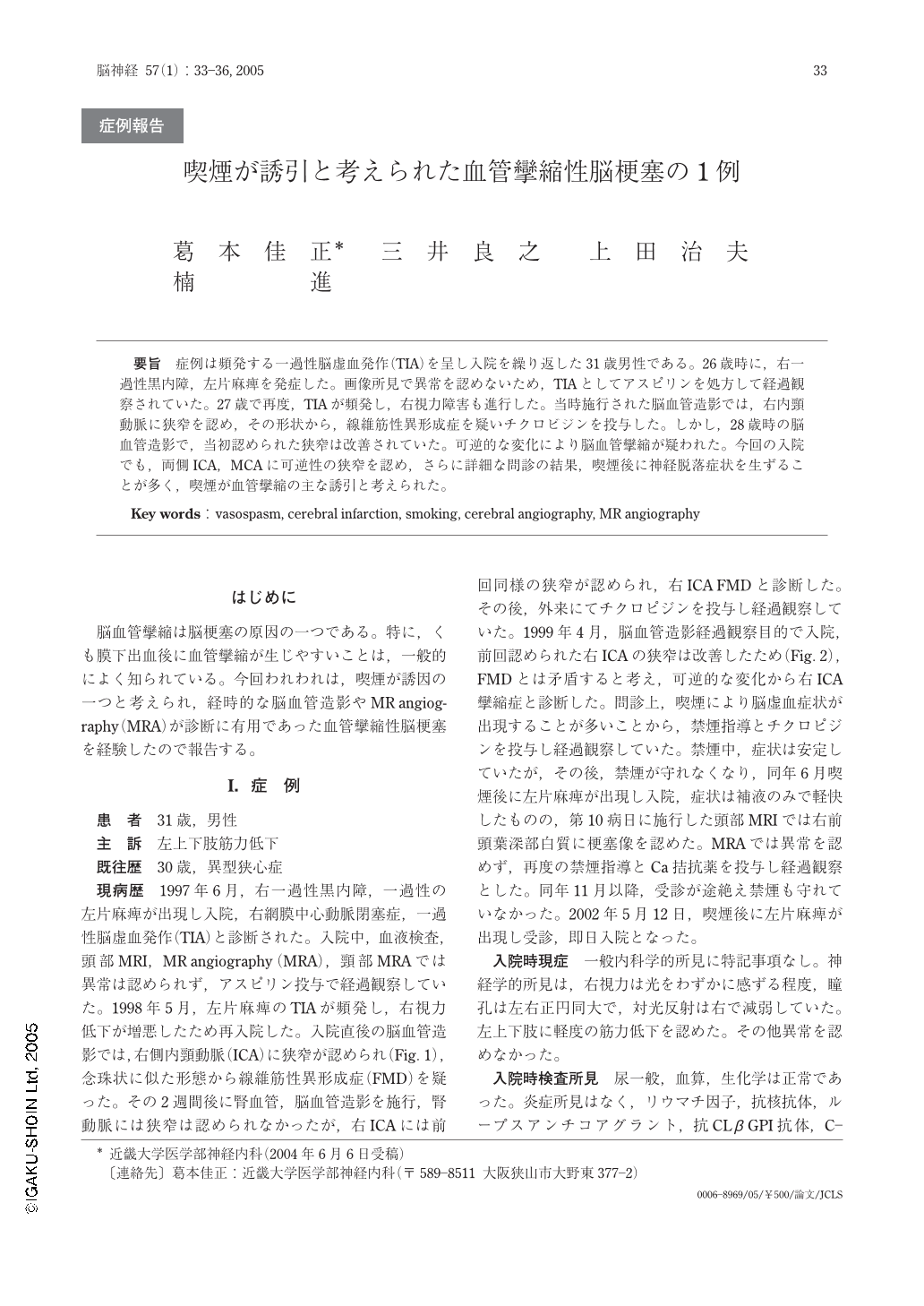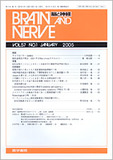Japanese
English
- 有料閲覧
- Abstract 文献概要
- 1ページ目 Look Inside
要旨 症例は頻発する一過性脳虚血発作(TIA)を呈し入院を繰り返した31歳男性である。26歳時に,右一過性黒内障,左片麻痺を発症した。画像所見で異常を認めないため,TIAとしてアスピリンを処方して経過観察されていた。27歳で再度,TIAが頻発し,右視力障害も進行した。当時施行された脳血管造影では,右内頸動脈に狭窄を認め,その形状から,線維筋性異形成症を疑いチクロビジンを投与した。しかし,28歳時の脳血管造影で,当初認められた狭窄は改善されていた。可逆的な変化により脳血管攣縮が疑われた。今回の入院でも,両側ICA,MCAに可逆性の狭窄を認め,さらに詳細な問診の結果,喫煙後に神経脱落症状を生ずることが多く,喫煙が血管攣縮の主な誘引と考えられた。
A 31-year-old man was admitted to our hospital because of frequent transient ischemic attacks(TIAs). The first episode involved right amaurosis fugax and left hemiparesis at the age of 26. Treatment with aspirin did not reduce frequency of TIA. Cerebral angiography at the age of 29 showed a significant stenosis in the right internal carotid artery with a string-of-beads-like appearance. This pattern suggested fibromuscular dysplasia. TIAs persisted despite of prophylactic medication with ticlopidine. When cerebral angiography was repeated at age of 28, stenosis in the right internal carotid artery had almost disappeared.
At the present admission, MR angiography showed stenoses of bilateral internal carotid arteries and middle cerebral arteries, which had disappeared when the study was repeated after 5 days. Vasospasm was suspected based on reversibility of changes in both conventional and MR angiographies. The patient was treated with a calcium antagonist to prevent vasospasm as well as cessations of smoking. The patient had a history of 20 cigarettes a day for 12 years and neurologic deficits often occurred after smoking. Therefore, smoking is considered to be a main trigger for TIAs in this patient.
(Received : June 6, 2004)

Copyright © 2005, Igaku-Shoin Ltd. All rights reserved.


